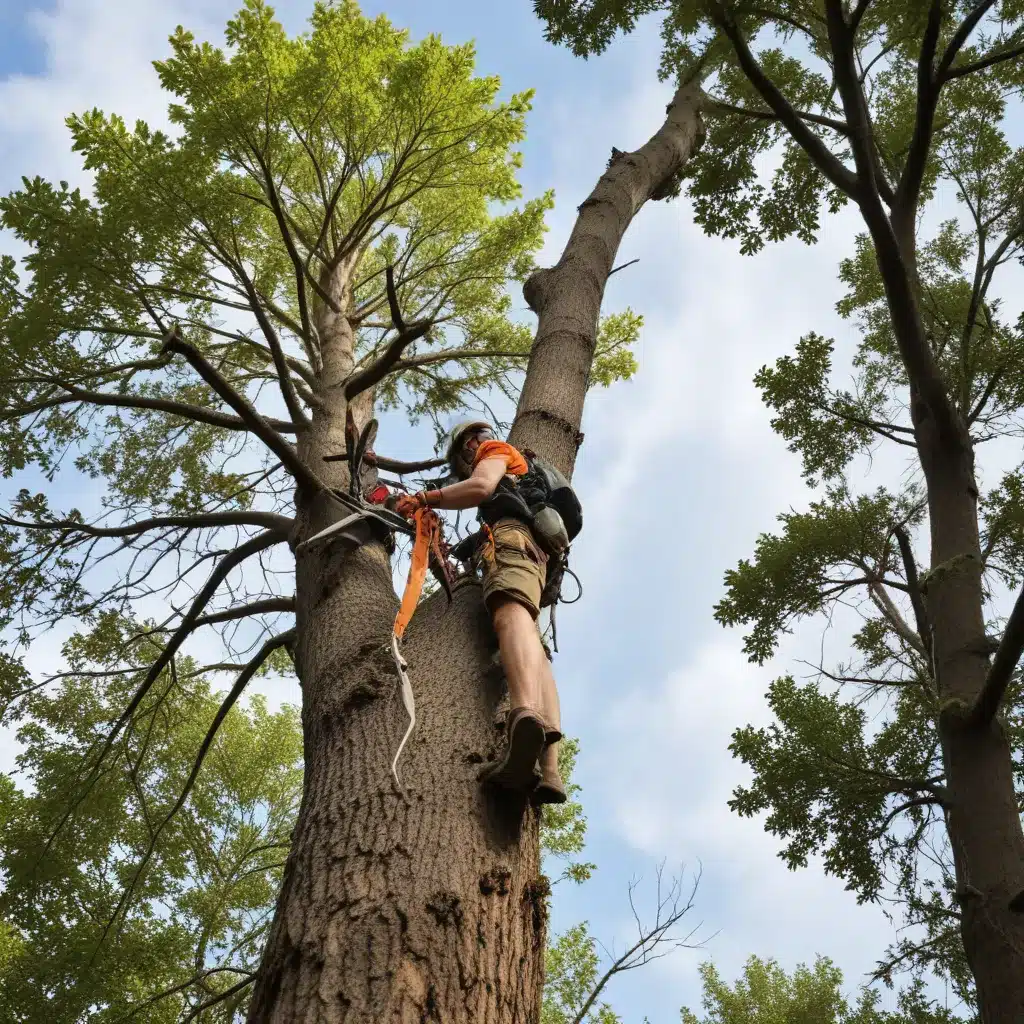
The transition to clean, renewable energy sources like solar and wind power has become an urgent imperative in the fight against climate change. However, this shift often requires clearing existing vegetation, posing challenging trade-offs between environmental protection and emissions reduction. As arboricultural experts at TriCounty Tree Care, we must thoughtfully navigate these complexities, balancing the ecological advantages of trees with the critical need for sustainable energy infrastructure.
Deforestation Impacts
The clearing of forested areas, including Joshua tree habitats in the Mojave Desert, to make way for solar developments exemplifies this dilemma. While solar power generation is a key solution for curbing greenhouse gas emissions, the removal of carbon-sequestering trees and shrubs can undermine the very environmental benefits these projects aim to achieve. Forests and desert ecosystems play a vital role in drawing down atmospheric carbon dioxide and releasing oxygen, making them invaluable natural allies in the battle against global warming.
Tree Clearing Techniques
Developers sometimes employ techniques like “shredding” or “hiding” to minimize the visible impacts of tree removal, but these approaches do little to address the fundamental ecological harm. The wholesale destruction of ancient Joshua trees, which can live for centuries, represents an irreplaceable loss of biodiversity and natural heritage. Even efforts to “offset” these impacts by protecting vegetation elsewhere face limitations, as the long-term value of a mature, intact ecosystem is difficult to replicate.
Environmental Considerations
The siting of renewable energy projects must carefully weigh the trade-offs between energy generation and environmental preservation. While the Mojave Desert may seem like an ideal location for solar farms due to its abundant sunlight, it is also home to a unique and fragile desert biome that sustains a variety of threatened and endangered species. Developers must seek alternatives that avoid or minimize the disruption of sensitive habitats, such as utilizing previously disturbed or degraded lands, integrating agrivoltaic systems that allow for continued agricultural use, or focusing on rooftop and parking lot solar installations in urban areas.
Solar Power
The proliferation of large-scale, ground-mounted solar projects has often come at the expense of natural landscapes. However, there are ample opportunities to expand solar energy generation while preserving the integrity of our ecosystems. Covering the rooftops of big-box stores, warehouses, and commercial structures, as well as the vast expanses of parking lots, could yield massive amounts of renewable energy without encroaching on undisturbed lands.
Wind Power
Similarly, the deployment of wind turbines can be carefully sited to minimize impacts on wildlife corridors, migratory bird routes, and other ecologically sensitive areas. By prioritizing the use of previously disturbed or degraded lands, developers can harness the power of wind while safeguarding the natural environment.
Hybrid Energy Systems
Integrating multiple renewable energy sources, such as combining solar and wind power, can further optimize the use of available land while reducing the individual footprint of each technology. Hybrid energy systems can leverage the complementary nature of these resources, ensuring a more reliable and efficient supply of clean electricity.
Emissions Reduction
The urgency of transitioning away from fossil fuels cannot be overstated. The environmental benefits of renewable energy, in terms of greenhouse gas emissions reduction and the mitigation of climate change, are unequivocal. By carefully balancing the needs of energy generation and ecosystem preservation, we can chart a sustainable path forward that protects both our natural heritage and the health of our planet.
Ecosystem Preservation
Preserving the integrity of our forests, deserts, and other vital ecosystems is not only an ethical imperative but also a practical necessity. These natural landscapes provide irreplaceable ecosystem services, such as water filtration, soil stabilization, and habitat for countless species. Maintaining these delicate equilibriums is crucial for sustaining biodiversity and ensuring the long-term resilience of our environment.
Sustainable Development
The transition to renewable energy must be guided by principles of sustainable development, where the needs of the present are met without compromising the ability of future generations to meet their own needs. This holistic approach requires a deeper understanding of the interconnected relationships between energy, the environment, and human well-being. By adopting such a framework, we can unlock innovative solutions that harmonize our energy demands with the preservation of our natural world.
Government Policies
Effective regulatory frameworks and policy incentives are essential for steering the renewable energy transition in a sustainable direction. Governments must work closely with industry, environmental advocates, and local communities to establish clear guidelines that prioritize the protection of sensitive ecosystems, promote the use of previously disturbed lands, and incentivize the integration of renewable energy with existing infrastructure.
Energy Incentives
Financial incentives, such as tax credits, feed-in tariffs, and net metering programs, can play a crucial role in encouraging the adoption of rooftop solar, community-scale projects, and other distributed renewable energy solutions that minimize the need for large-scale, ground-mounted installations. By aligning economic interests with environmental stewardship, policymakers can drive a more sustainable energy transition.
Permitting and Approvals
The permitting and approval process for renewable energy projects must carefully weigh the potential impacts on local ecosystems and communities. Rigorous environmental impact assessments, meaningful stakeholder engagement, and transparent decision-making can help ensure that the development of renewable energy infrastructure aligns with the long-term well-being of the surrounding environment and its inhabitants.
As we navigate the complex and often conflicting priorities of renewable energy expansion and environmental protection, the experts at TriCounty Tree Care remain committed to finding innovative solutions that preserve the health and vitality of our natural landscapes. By working collaboratively with policymakers, industry leaders, and community stakeholders, we can chart a course towards a sustainable energy future that safeguards our precious natural resources for generations to come.


